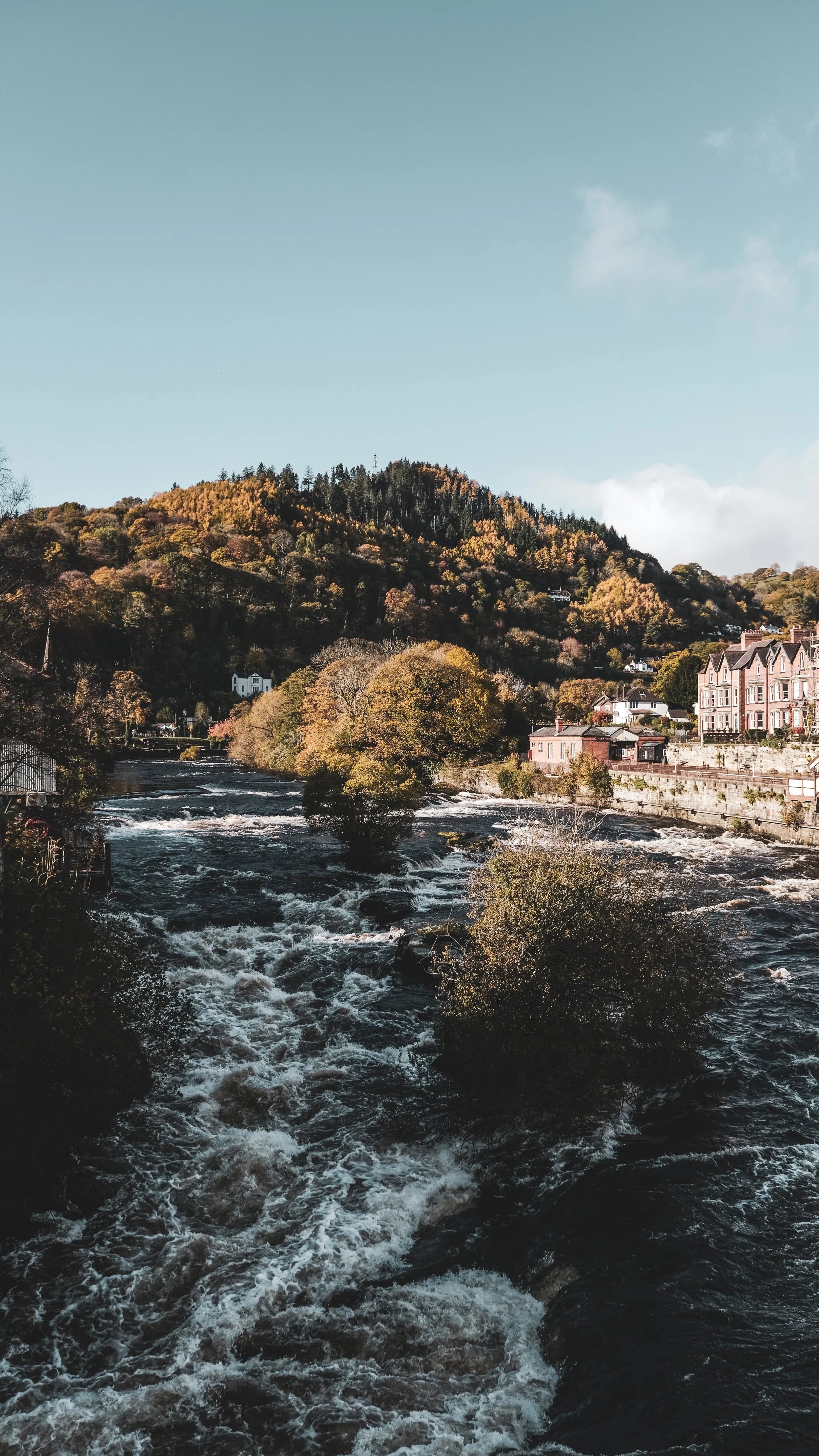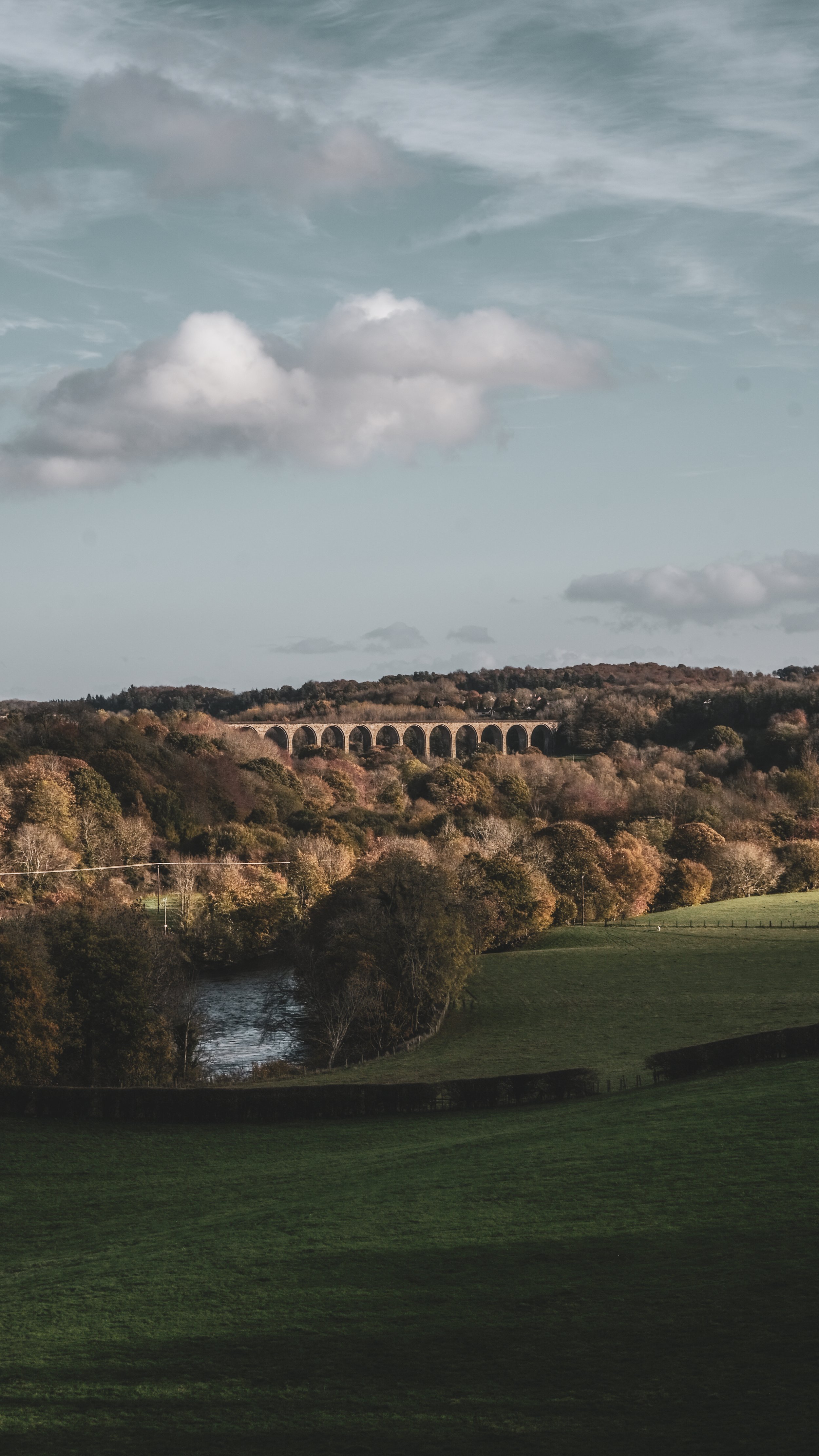Llangollen
Llangollen, a riverside town in North Wales, radiates a unique charm in the off-season from late autumn to early spring. Without the bustling crowds of festivals and canal boaters, it invites you to embrace a quieter, slower-paced experience—ideal for nature lovers, walkers, history enthusiasts, and those who seek the tranquility of peaceful travel.
In winter, the River Dee flows with intensity, creating an atmospheric scene. The valleys reveal their wild and rugged beauty, while the ruins of Castell Dinas Brân become enchanting in the mist and autumn hue. Canal walks transform into serene moments, with ducks gliding by instead of tourists, accompanied by the gentle rustle of falling leaves.

Why go to Llangollen?
Visiting Llangollen in the off-season is more than a fallback—it’s the ultimate way to experience its true essence. In the peak months, places like Pontcysyllte Aqueduct can become crowded, but in winter, you can pause for photos with no one in the shot, walk the canal in peaceful solitude, and soak in the height and scenery without distraction.
Life moves slower here in winter—and that’s a beautiful feature. The off-season is perfect for long walks, reading by a riverside window, and enjoying steam train rides when available. It’s a time to explore Welsh history without feeling rushed.
There’s a unique magic in a town renowned for summer flowers and festivals as it rests: the hills feel older, the river sounds resonate, and the town itself breathes. It’s Wales in its raw, soulful form, inviting you to embrace its quiet beauty.
Getting there
Traveling to Llangollen is like stepping into a postcard of North Wales, where the River Dee dances through wooded hills and stone cottages embrace its banks. Here, life moves at a gentler pace, and every turn in the road reveals a quiet beauty.
If you’re coming from London, the journey takes around four to five hours by car. The initial stretch along the M40 or M6 is quick and modern, but as you leave the motorways and turn onto the A5, the character of the trip transforms. This route, an ancient Roman highway, winds through picturesque borderlands and charming market towns like Chirk and Oswestry. Before long, the hills close in, the fields become greener, and the air is filled with a fresh, earthy scent that signals your arrival at the edge of Wales. Suddenly, Llangollen’s rooftops emerge in the valley below, the river sparkling silver beneath the bridge at the heart of the town.
From Manchester or Liverpool, the drive is just over an hour and a half, with scenery growing more enchanting the farther west you venture. The roads narrow into lanes bordered by dry stone walls and sheep-dotted pastures, and as you cross into Denbighshire, the countryside wraps itself around you like a warm embrace.
For those who prefer the train, the nearest mainline station is Ruabon, about seven miles away. This small but well-connected station is easily accessible from Chester, Shrewsbury, or Birmingham. From Ruabon, local buses or taxis whisk you into Llangollen in about twenty minutes. The journey from the station along the winding road by the River Dee offers glimpses of green hills and, in summer, bursts of vibrant purple heather along the slopes.
If you’re arriving from abroad, the closest airports are Manchester and Liverpool John Lennon, both about an hour and a half away by car. Car hire is simple at either terminal, and as you head west, the open countryside of Cheshire unfolds before you, rising toward the Welsh border, where the language on road signs shifts and the scenery breathes deeper.
No matter how you choose to travel, arriving in Llangollen feels like stepping into a storybook. The town, nestled at the confluence of hills and river, is watched over by the ancient ruins of Castell Dinas Brân and the steam trains of the Llangollen Railway chugging along the valley below. Getting there is effortless, yet the journey — with its changing landscapes and sense of tranquility — makes your arrival truly unforgettable.
When is the off-season ?
October - March




























